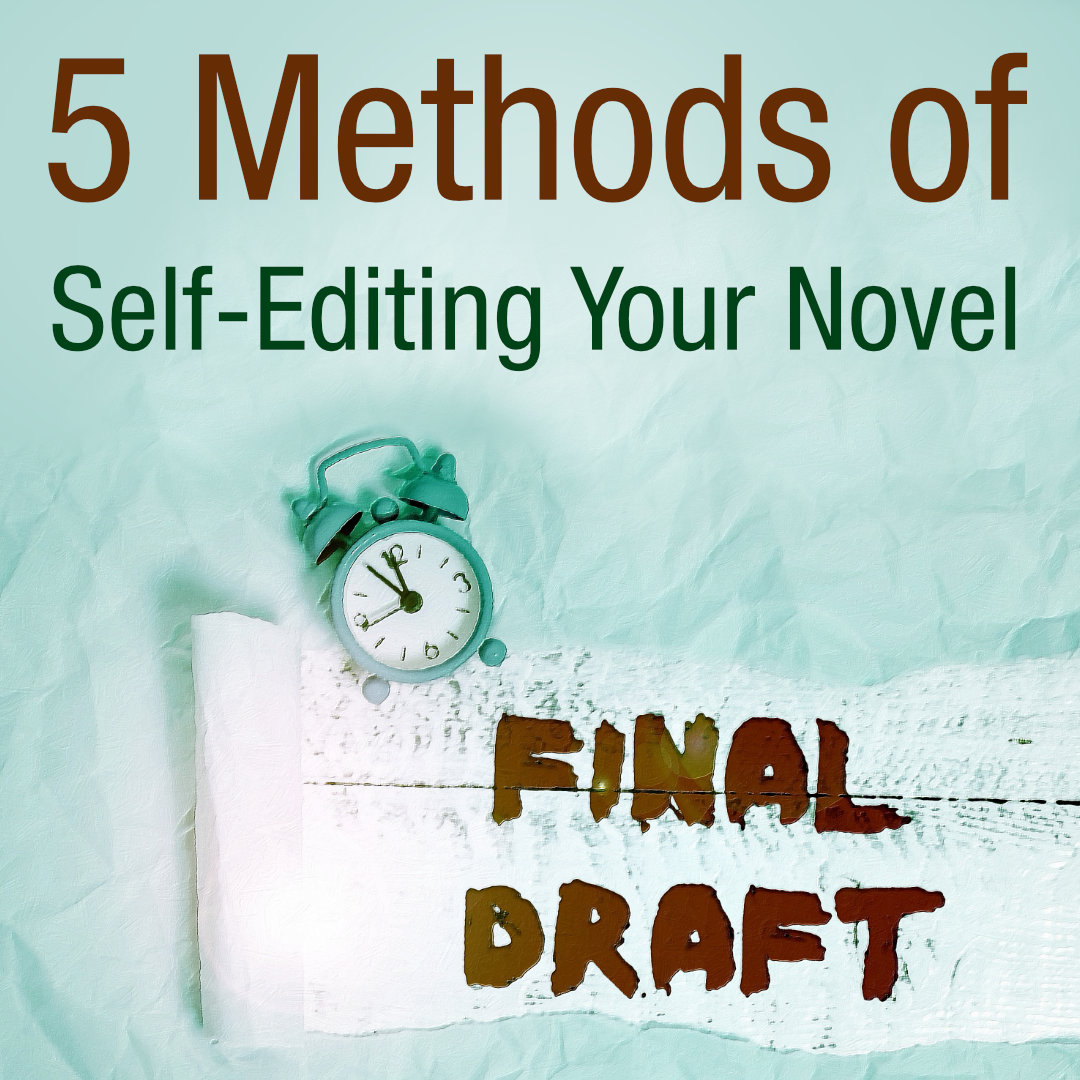
5 Methods of Self-Editing Your Novel
Estimated Reading Time:
Talk to any author and they will each have different advice on self-editing your novel self-editing your novel. The reason for this is there is no right way to edit. Everyone has different strengths and weaknesses when it comes to writing. Because of this, every first manuscript looks different and varying versions of the draft are needed. In this blog post, we are going to look at five methods of self-editing your novel.
In a previous post, we covered 6 Guidelines to Self Editing Your Novel. Here we will look at some additional methods of speeding up your editing process, finding new ways to edit, and increasing the quality of your novel.
An editor is irreplaceable. The point of self-editing is to make your editor’s job easier. There are small adjustments that you can make that will save you money and save your editor time. Self-editing your work also helps you become a better writer because you get to reflect upon what you have worked on.
Why you Should be Self-Editing your Novel
Whether you know it or not, as writers, we have fallbacks that we go to when working on our manuscripts. You might return to a particular phrase when describing a character, or a certain passage when transitioning scenes, as examples. The stylistic ruts can ultimately encumber our manuscript and prevent it from reaching its full potential. Then, of course, there are the technical revisions you can make, such as syntax, grammar, and sentence/paragraph structure.
1.Cycling

Cycling is a method I have heard from the author Dean Wesley Smith in his non-fiction book Writing into the Dark: How to Write a Novel without an Outline. I cannot say enough good things about this advice from the seasoned writer. Dean Wesley Smith talks about producing one clean manuscript through a process called cycling.
The book explains how other long-time writers also use this method and have various names for it. Dean Wesley Smith calls it cycling, and he goes quite in-depth on how to do it in his book. We won’t get into the details with it on this blog post since it is his method. In simple terms, it is the process of writing for a short period and then going back and reading through the book again and revising it until you have caught up to where you left off. Then you repeat the process.
2. Linear Revisions

This method of editing is probably the most familiar to everyone. Once we have completed our first manuscript, many things need fixing. We take a look at our revision notes (you keep revision notes, right?) And see what needs to be revised after we finished the manuscript. Below are a few methods of linear revisions
Edit Everything
A careful, tedious process where you focus on correcting everything that you can. Revisions include the beat, dialogue, character development, plot, and technical edits. Revising this way can take quite a while as you are refining the entire manuscript chapter by chapter. In the end, you have a pretty solid second revision of your manuscript.
Focus on Segments
Another method of linear editing is to focus each revision on an individual segment. For the first revision of the manuscript, you might want to ensure that the story is readable. For the second revision, you might focus on story flow, or dialogue, or character development, and so on. Concentrating on segments of the manuscript throughout the whole story helps you narrow your mind’s focus on the task at hand.
For example, if you are focusing only on dialogue in one revision, you can ensure that you have 100% of your efforts on making it the most believable dialogue you can. After that, you can ensure that the story follows the logical flow that will capture the reader’s engagement. You will not get overwhelmed by the number of revisions through this process.
3. Find and Replace

The find and replace method works fantastic with removing redundancies and cleaning up your stylistic approach to descriptions. While working on the first manuscript, or even revising for the first time, keep a list of words that you commonly use, or phrases that you fall back to.
For example, if you overuse the word “really “or the phrase “it was difficult…” you can find every instance of the word/phrase throughout the whole manuscript and find new ways of describing it. While you are replacing the word/phrase, you may even notice new stylistic methods that you overuse and can then cleanup.
By removing redundancies, you ensure that the manuscript has an engaging flow beat by beat that doesn’t get boring to read. If it is repetitive, readers might start to skim over sections or even worse, put the book down.
4. Technical Assistance

If you’re looking to speed up your method of editing, consider looking at software to help with the technical aspects of the English-language. We tend to look at our manuscript so many times that we will overlook simple grammar and syntax errors. Your editor can fix them, but you can make their lives easier by correcting them before the manuscript enters their hands.
There are plenty of online apps and software that will assist you in correcting your syntax and grammar. Grammarly is a popular option, and so is the Hemingway app. There are more out there, some are free, and some are pay to use, so feel free to do your research to find one that best suits you.
5. Text-To-Speech

You can hear your manuscript read to you as well. If you’re using Microsoft Word, they have the text-to-speech option where the software will read the manuscript word for word. Now, this is a computer reading it to you, so it will not sound very engaging. However, having the manuscript read to you gives you the opportunity of understanding your manuscript from a new angle. As mentioned previously, it is easy for us to overlook portions of our manuscript because we review it multiple times, and our brain begins to overlook sections.
Text-to-speech allows you to catch errors because you can hear another voice speak the words that you wrote. You may think that what you wrote makes sense as you read it in your head until you hear it spoken aloud.
Editing your work is a big task. Writing the first draft is always the most exciting and the easiest. Discipline and repetition are needed to ensure your manuscript is polished and ready to be read by someone else. The five methods self-editing your novel above can help speed up your process to ensure your work is the best that you can make it.
Do you have any methods of self-editing your novel?
Feel free to share in the comments.

About Konn Lavery
Konn Lavery is a Canadian author whose work has been recognized by Edmonton’s top five bestseller charts and by reviewers such as Readers’ Favorite, and Literary Titan.

